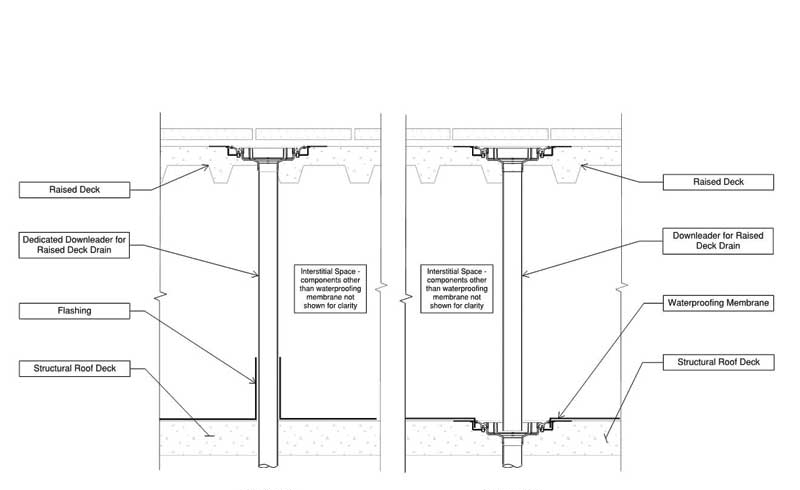A roof drain is installed on a building roof or canopy to convey storm water from the roof or canopy to the storm drainage sewer or retaining area.
Roof drain occupied roof.
Watts drainage products rd 300 r series 4 in.
Roof drains from zurn include combination primary overflow control flow dual outlet siphonic retrofit and more which cater from educational to commercial needs.
Building drainage roof drains.
Close coordination with structural engineering relative to location and roof pitch as well as proper sizing in accordance with local climactic conditions are the basis for the design of the roof drainage system.
Usually scuppers are part of the backup drainage system that helps the roof shed excess stormwater.
A scupper is a drainage point on the edge of the roof.
The main benefit of inner drains is that the system is hidden from view.
Storm water can be received in three different ways.
Pitched roofs not surrounded by parapet walls are generally drained by gutters.
They are incorporated into the walls or parapet.
Roof drains are generally installed on flat roofs or roofs surrounded by parapet walls.
Inner roof drains.
No hub cast iron high volume roof drain with ductile iron dome.
Inner drains are resistant to freezing but can require careful maintenance to prevent problems.
Application access covers boxes animal shelter zoo apartments canopy terrace combination main overflow drain.
Watts drainage products rd 300 r series 6 in.
From the roof drain to the storm drainage piping to storm sewer eventually making it s way to the city sewer system.

